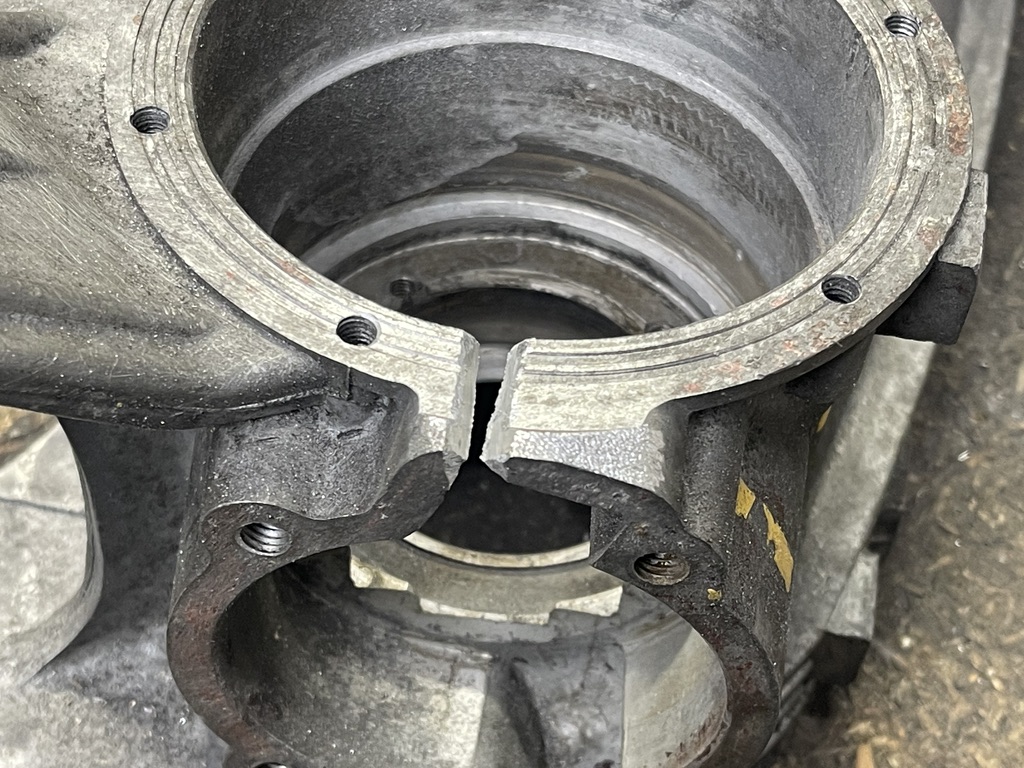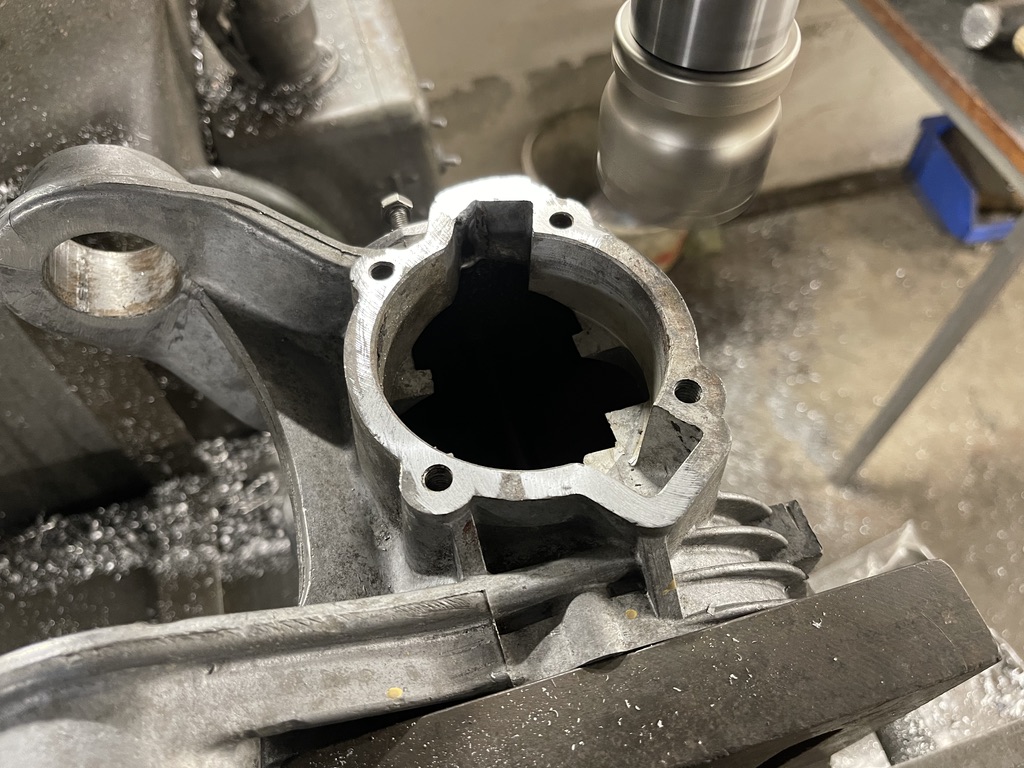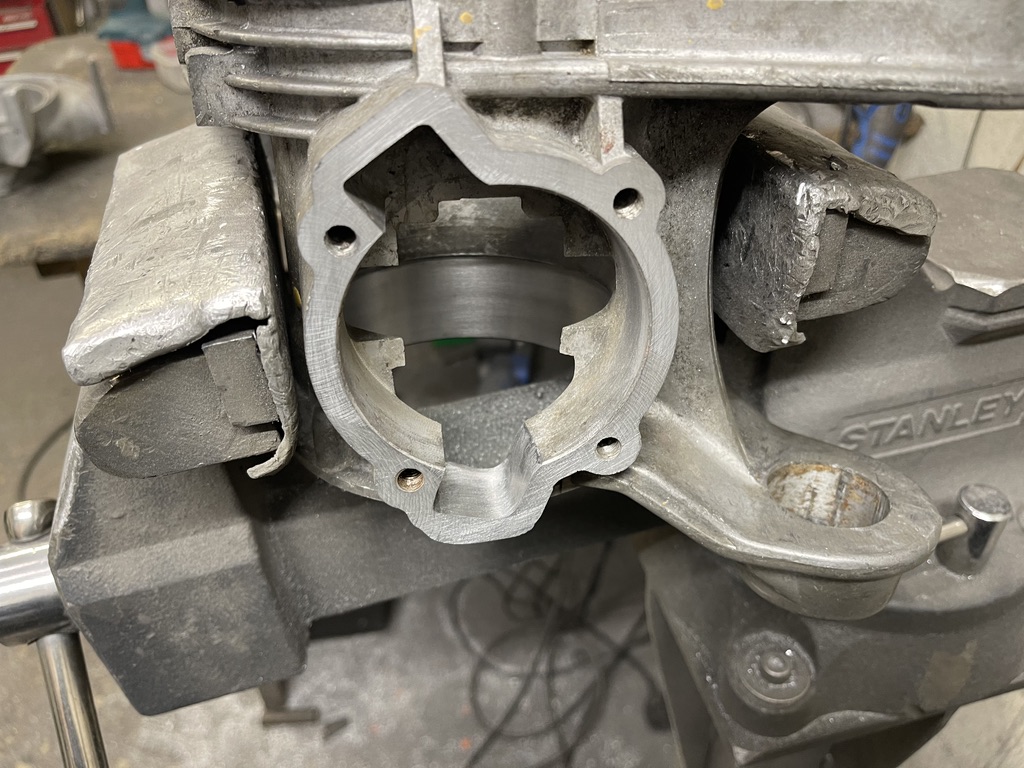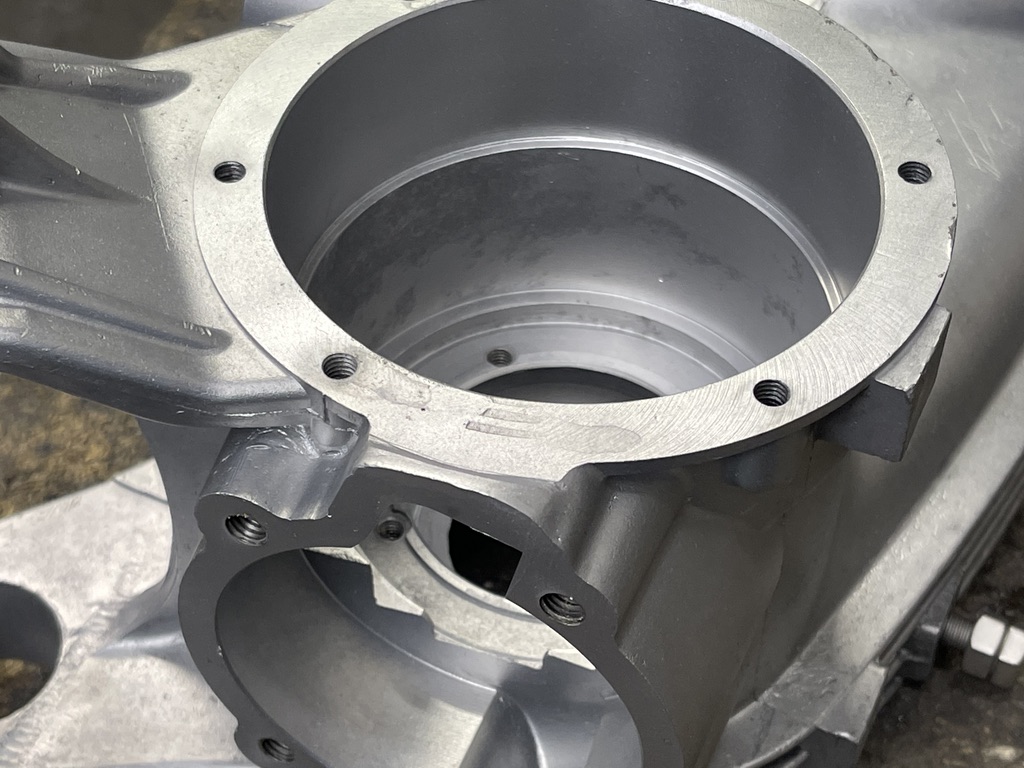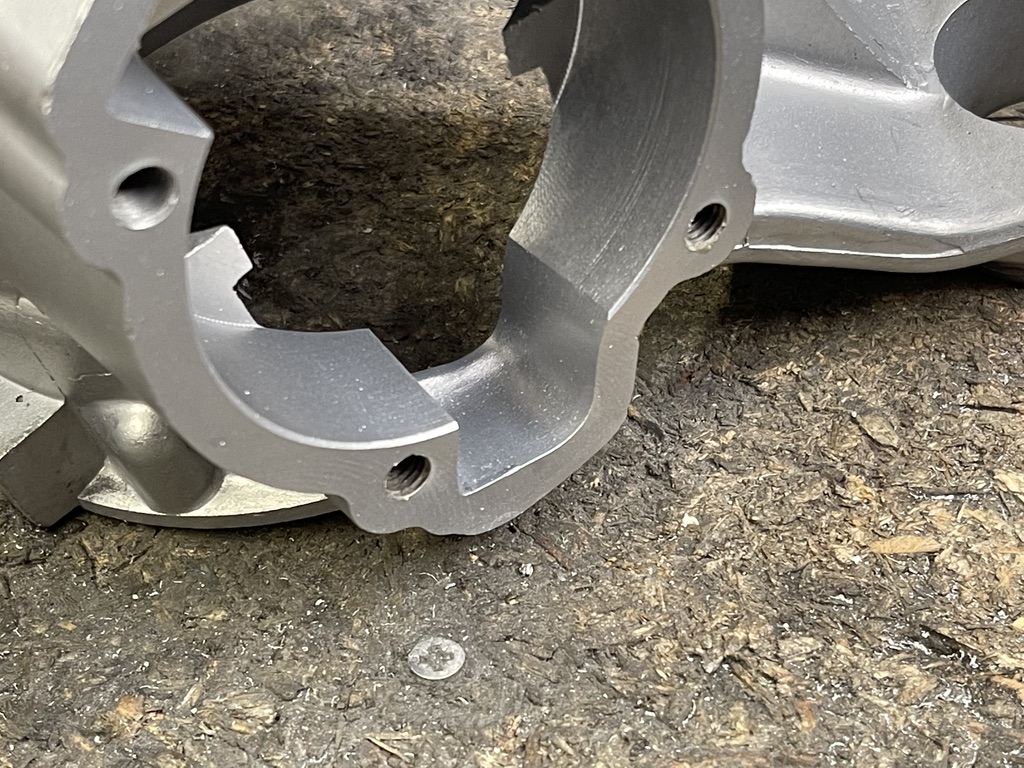For some strange reason which I’ve never had the answer to – is I don’t know why Spanish engines had grooves machined into the mag housing face and end plate face.
I could suspect on the mag housing face the grooves would cut into a gasket for it to seal better. But if that was the case why do it to the end plate face as well? Another reason could be they had tooling to machine easier! There’s probably a better answer but I’ve not seen it anywhere.
But it does help to easily identify and Spanish engine casing!
What ever – it weakens the casing. Especially on the mag face and it’s very common to see a crack through into the transfer port – which is the weak link in all large block casings. This happens on Italian and SIL casings also but mainly the Spanish.
But you don’t see it on the small block casings showing that the large block has a weak area and is even worse if a transfer port has been cut out to the old stage 6 transfer ports.
I’ve seen this repair done badly so many times.
If you weld in this area everything distorts, some do it and only file the face. If you check the photos you can see high and low spots even though it’s been machined. The idea is to machine as little off as you can and still get a seal on the gasket faces.
And Ive seen this job done without the base face machined as well.
As with all welding jobs, the casing has to be totally stripped, all studs removed and the casing cleaned to remove as much oil as possible. But even with our ultra sonic cleaner oil has been soaked into the casing and only comes out when it’s heated up, causing problems for the welder.
With a clean casing you need to grind into the crack and prepare it to break the surface and find clean metal. It’s important to pre heat a big casing, this stops a casing cracking and distorting more than it should. Once welded it needs cooling to do the machining which needs doing on a milling machine where the casing is clamped tight to the crankcase side face keeping the mag face as true as you can.
Now if everything goes well and the alloy welds okay there should be very little distortion, but this area is weak and distorts quite a lot. It’s not uncommon to machine 0.5mm off the face, this is quite a lot and why we supply thicker mag gaskets to take up the meat thats been removed. Also the cylinder base has to be machined which requires removing the casing and resetting it vertical in the miller. Usually not much meat needs machining from this face but it usually shows people have butchered this area so it does need a few runs over it.
Do the job right and the casing is good to go – don’t do it right and you’re always going to have a problem, especially if you do a pressure leak down test.
Whenever you weld in this area the mag housing hole distorts, you would have to hammer a mag housing in place – of course you don’t want this. I hand polish inside the big hole and keep trying a mag housing to fid the high spots. You would ever manage this on the miller as there is nothing to clock up to to find centre and when you do this the hole ends up too big. Ideally a mag housing just drops straight into the casing – this makes an engine assembly much easier.
